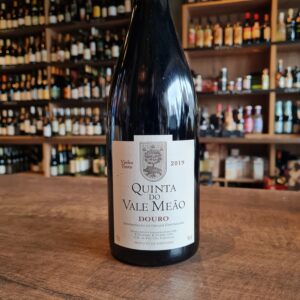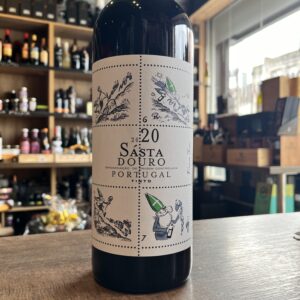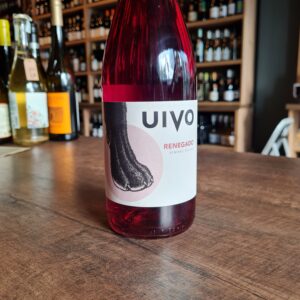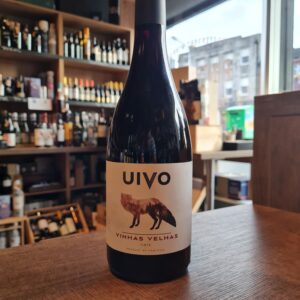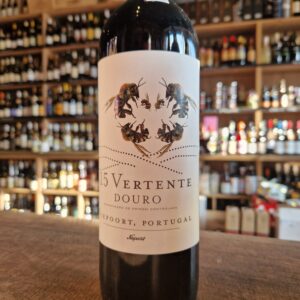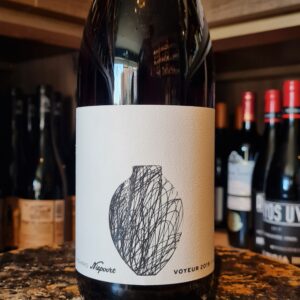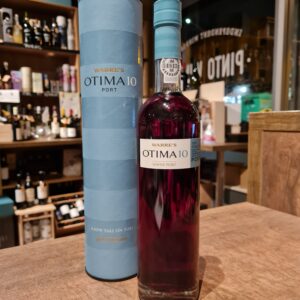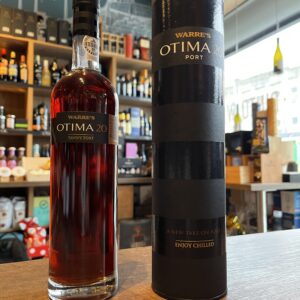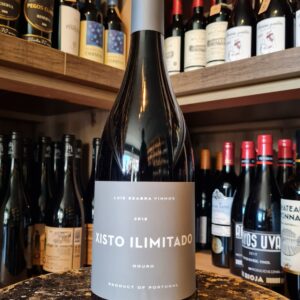-
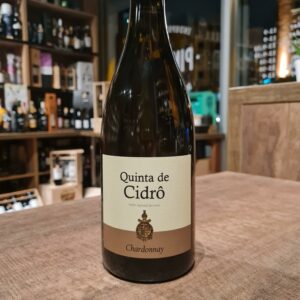 Quinta de Cidrô is located at São João da Pesqueira, which is one of the most highly regarded areas of Douro Valley. Throughout the last 20 years, Cidrô has been transformed into an experimental-model vineyard for the entire region. In virgin soils, cutting edge techniques were employed to plant 150 ha of the best varieties, creating one of the largest surfaces of single vineyard in the entire Douro Region. In the most privileged location, international varieties perform equally well as the local grapes. Chardonnay, Sauvignon Blanc, Viognier, Pinot Noir, and the adaptable Cabernet Sauvignon are some of the foreign varieties that here express their best qualities when vinified by the extensive winemaking know-how present at the Company. The Quinta de Cidrô Sauvignon Blanc was the second result of the ongoing experimentation-taking place at this vineyard.
Quinta de Cidrô is located at São João da Pesqueira, which is one of the most highly regarded areas of Douro Valley. Throughout the last 20 years, Cidrô has been transformed into an experimental-model vineyard for the entire region. In virgin soils, cutting edge techniques were employed to plant 150 ha of the best varieties, creating one of the largest surfaces of single vineyard in the entire Douro Region. In the most privileged location, international varieties perform equally well as the local grapes. Chardonnay, Sauvignon Blanc, Viognier, Pinot Noir, and the adaptable Cabernet Sauvignon are some of the foreign varieties that here express their best qualities when vinified by the extensive winemaking know-how present at the Company. The Quinta de Cidrô Sauvignon Blanc was the second result of the ongoing experimentation-taking place at this vineyard. -
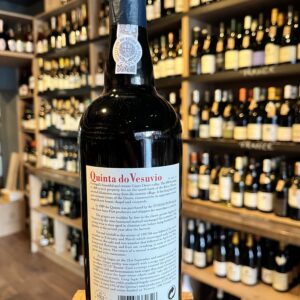
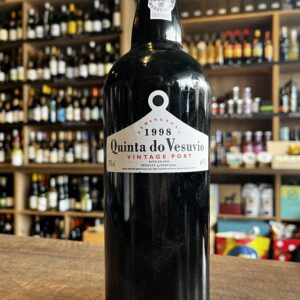 A Vintage Port is only declared in years of exceptional quality. Quinta do Vesuvio is arguably the most magnificent estate in the Douro valley. Located in the beautiful and austere Port-growing region of the Upper Douro valley, its history dates back to the 16th Century. “The quinta of all quintas – one of the wonders of the world”. At Vesuvio, the work of man and the work of nature achieve a perfect and enduring harmony. More than anywhere else in the Douro it has a haunting and enchanting beauty; when you leave it, you take with you a sense of the place that does not fade with time.
A Vintage Port is only declared in years of exceptional quality. Quinta do Vesuvio is arguably the most magnificent estate in the Douro valley. Located in the beautiful and austere Port-growing region of the Upper Douro valley, its history dates back to the 16th Century. “The quinta of all quintas – one of the wonders of the world”. At Vesuvio, the work of man and the work of nature achieve a perfect and enduring harmony. More than anywhere else in the Douro it has a haunting and enchanting beauty; when you leave it, you take with you a sense of the place that does not fade with time. -
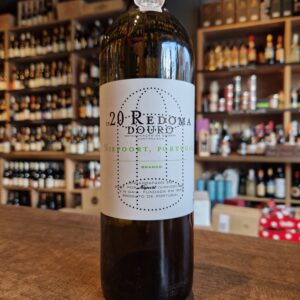 This oaky white will appeal to Graves or Burgundy lovers. The grapes used for the Redoma Branco originate from old vines growing on the right bank of the Douro River, at an altitude of between 400 and 600 metres. These vines predominantly grow in mica-schist soils, which, in combination with the complexity of the various grape varieties typical of the Douro region, create delicate wines full of freshness and minerality. Food suggestions-Oysters, oven-baked fish, poultry and other white meats. Vegetarian options: dishes based on root vegetables (turnips, sweet potato, beetroot), Caesar salad, cheese.
This oaky white will appeal to Graves or Burgundy lovers. The grapes used for the Redoma Branco originate from old vines growing on the right bank of the Douro River, at an altitude of between 400 and 600 metres. These vines predominantly grow in mica-schist soils, which, in combination with the complexity of the various grape varieties typical of the Douro region, create delicate wines full of freshness and minerality. Food suggestions-Oysters, oven-baked fish, poultry and other white meats. Vegetarian options: dishes based on root vegetables (turnips, sweet potato, beetroot), Caesar salad, cheese. -
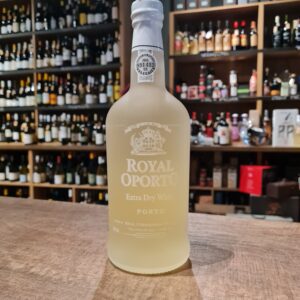 The Port is by difinition, generous and full-bodied wine, produced in the region Douro- the demarcated region of the world's oldest wines. Made from grapes traditionally used in the region, its wine making process is characterized by adding brandy to the wine in full fermentation. This type of port that inspires moments and new forms of consumption, which we recommend be served as Port Tonic. Classic serving would be as a chilled aperitif, but also you could be adventurous and make a ''Caipi Royal'' or just serve it on the rocks with an orange slice.
The Port is by difinition, generous and full-bodied wine, produced in the region Douro- the demarcated region of the world's oldest wines. Made from grapes traditionally used in the region, its wine making process is characterized by adding brandy to the wine in full fermentation. This type of port that inspires moments and new forms of consumption, which we recommend be served as Port Tonic. Classic serving would be as a chilled aperitif, but also you could be adventurous and make a ''Caipi Royal'' or just serve it on the rocks with an orange slice. -
Out of stock
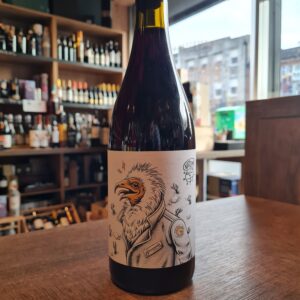 Ricardo Alves and Frederico Machado visited Bemposta for the first time together in 2017. They were on the Portuguese back roads in the Parque Natural das Arribas do Douro, with its wealth of ancient, indigenous and largely forgotten grapevines chaotically perched on the extreme slopes on the Douro river gorge, when they came upon the perfect location for their life project, the place to which they would commit their youth. They set out to rediscover and revitalize an ancient wine culture whose local home winegrowers have just barely kept the faint bloodline of their vinous history from extinction. Trás-os-Montes is a large, but not too well known, wine region of north eastern Portugal (Translation: behind the Mountains), is where the Arribas Wine Company are based and both are very passionate have been making some very interesting wines. Saroto Tinto is made from a small, old parcel of vines comprised of old-fashioned red and white Douro varieties. The resultant wine is full of wild forest fruit, lots of berries with a kick of natural sourness. Plenty of fresh acidity adds juiciness and balances the rustic, grippy tannins, making for quite a light red. Earthy minerality adds extra complexity and the finish is long and moreish. Its bottled unfined and unfiltered so may have natural sediment in the bottle.
Ricardo Alves and Frederico Machado visited Bemposta for the first time together in 2017. They were on the Portuguese back roads in the Parque Natural das Arribas do Douro, with its wealth of ancient, indigenous and largely forgotten grapevines chaotically perched on the extreme slopes on the Douro river gorge, when they came upon the perfect location for their life project, the place to which they would commit their youth. They set out to rediscover and revitalize an ancient wine culture whose local home winegrowers have just barely kept the faint bloodline of their vinous history from extinction. Trás-os-Montes is a large, but not too well known, wine region of north eastern Portugal (Translation: behind the Mountains), is where the Arribas Wine Company are based and both are very passionate have been making some very interesting wines. Saroto Tinto is made from a small, old parcel of vines comprised of old-fashioned red and white Douro varieties. The resultant wine is full of wild forest fruit, lots of berries with a kick of natural sourness. Plenty of fresh acidity adds juiciness and balances the rustic, grippy tannins, making for quite a light red. Earthy minerality adds extra complexity and the finish is long and moreish. Its bottled unfined and unfiltered so may have natural sediment in the bottle. -
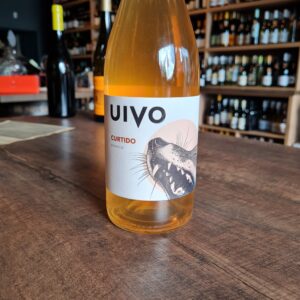 Uivo, a howl back to Nature! Naturally farmed Moscatel Galego, Branco Wine grapes with minimal intervention in the cellar, 4 months of skin contact in cement tanks. Folias de Baco was started in 2007 by young, innovative winemaker, Tiago Sampaio, who was inspired by his grandfather’s vineyard work. He has a vivacious curiosity and loves to experiment at every step of the winemaking/growing processes. He has studied agricultural engineering and has a PhD in Viticulture and Enology from Oregon State University, where he picked up on modern philosophies and aesthetics of winemaking, never forgetting his Douro roots. Folias de Baco is in the Alto Douro, in the sub-region of Cima-Corgo where the land is very tough and challenging at a higher altitude, but it is an expression of traditional melding with modern techniques. The ‘Uivo Curtido’ is comprised of 100% moscatel galego from 35+ year old vines in soils spattered with schist and granite. It is unfined and unfiltered. As tasty as it looks. Organically grown, low-intervention/natural wine, vegan. Have fun with it
Uivo, a howl back to Nature! Naturally farmed Moscatel Galego, Branco Wine grapes with minimal intervention in the cellar, 4 months of skin contact in cement tanks. Folias de Baco was started in 2007 by young, innovative winemaker, Tiago Sampaio, who was inspired by his grandfather’s vineyard work. He has a vivacious curiosity and loves to experiment at every step of the winemaking/growing processes. He has studied agricultural engineering and has a PhD in Viticulture and Enology from Oregon State University, where he picked up on modern philosophies and aesthetics of winemaking, never forgetting his Douro roots. Folias de Baco is in the Alto Douro, in the sub-region of Cima-Corgo where the land is very tough and challenging at a higher altitude, but it is an expression of traditional melding with modern techniques. The ‘Uivo Curtido’ is comprised of 100% moscatel galego from 35+ year old vines in soils spattered with schist and granite. It is unfined and unfiltered. As tasty as it looks. Organically grown, low-intervention/natural wine, vegan. Have fun with it -
Out of stock
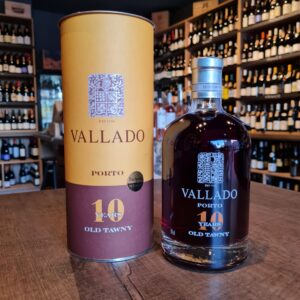 Quinta do Vallado, established in 1716, is one of the oldest and most famous Quintas in the Douro Valley. It once belonged to the legendary Dona Antonia Adelaide Ferreira, and still belongs to her descendents. Produces both still and port wines. This eighteenth-century Douro wine estate is actually one of the most modern-looking in Portugal. Although the team uses the traditional panoply of indigenous grapes, its methods are bang up to date and the results are nothing short of sensational. Tawny ports are wines usually made from red grapes that are aged in wooden barrels exposing them to gradual oxidation and evaporation. As a result of this oxidation, they mellow to a golden-brown color. The exposure to oxygen imparts "nutty" flavours to the wine, which is blended to match the house style. This port is really best enjoyed with a good strong cheese board. Think mature hard cheeses and salty blues. Rich and flavoursome to match with the intense flavours of the port.
Quinta do Vallado, established in 1716, is one of the oldest and most famous Quintas in the Douro Valley. It once belonged to the legendary Dona Antonia Adelaide Ferreira, and still belongs to her descendents. Produces both still and port wines. This eighteenth-century Douro wine estate is actually one of the most modern-looking in Portugal. Although the team uses the traditional panoply of indigenous grapes, its methods are bang up to date and the results are nothing short of sensational. Tawny ports are wines usually made from red grapes that are aged in wooden barrels exposing them to gradual oxidation and evaporation. As a result of this oxidation, they mellow to a golden-brown color. The exposure to oxygen imparts "nutty" flavours to the wine, which is blended to match the house style. This port is really best enjoyed with a good strong cheese board. Think mature hard cheeses and salty blues. Rich and flavoursome to match with the intense flavours of the port. -
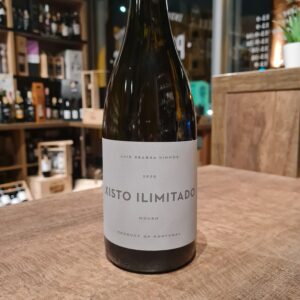 Another under the radar Portuguese White. This drop is now considered one of the new best contemporanean whites in Portugal. Produced by Luis Seabra, who worked for more than 10 years as an oenologist for Dirk Niepoort and finally started to follow his own path in 2012. The name he gives to his wines is indicative of his vision of wine: Xisto (Schist). He makes very pure wines that reflect their terroir. Luis Seabra sets a new standard in the Douro with his pure wines. Xisto Ilimitado, is a Portuguese analogue of the idea of a "village-level" Burgundy. A blend of six varieties planted in three sub-areas of the Douro, Ilimitado is a glimpse of the appellation's schist soil. Luis Seabra, has concentrated his production on the different soil types of the valley. Bright, concentrated and fresh, Xisto Ilimitado is an excellent introduction to the new Douro. Vineyards located in Cima Corgo. The vines are between 30 and 45 years old, planted in micaceous schist at an altitude of 500 to 600 m, and are a sub-region that experiences extreme highs and lows in terms of temperature, with one of the largest day-night temperature deltas in Portugal. As such, the fruit experiences an extended resting period. Annual rainfall of 400 mm typical of the region. Goes wonderfully with roasted poultry, white fish and seafood, and especially with the spiciest preparations
Another under the radar Portuguese White. This drop is now considered one of the new best contemporanean whites in Portugal. Produced by Luis Seabra, who worked for more than 10 years as an oenologist for Dirk Niepoort and finally started to follow his own path in 2012. The name he gives to his wines is indicative of his vision of wine: Xisto (Schist). He makes very pure wines that reflect their terroir. Luis Seabra sets a new standard in the Douro with his pure wines. Xisto Ilimitado, is a Portuguese analogue of the idea of a "village-level" Burgundy. A blend of six varieties planted in three sub-areas of the Douro, Ilimitado is a glimpse of the appellation's schist soil. Luis Seabra, has concentrated his production on the different soil types of the valley. Bright, concentrated and fresh, Xisto Ilimitado is an excellent introduction to the new Douro. Vineyards located in Cima Corgo. The vines are between 30 and 45 years old, planted in micaceous schist at an altitude of 500 to 600 m, and are a sub-region that experiences extreme highs and lows in terms of temperature, with one of the largest day-night temperature deltas in Portugal. As such, the fruit experiences an extended resting period. Annual rainfall of 400 mm typical of the region. Goes wonderfully with roasted poultry, white fish and seafood, and especially with the spiciest preparations


